‘New World’ Could Be Way Older Than We Thought
17:34 minutes
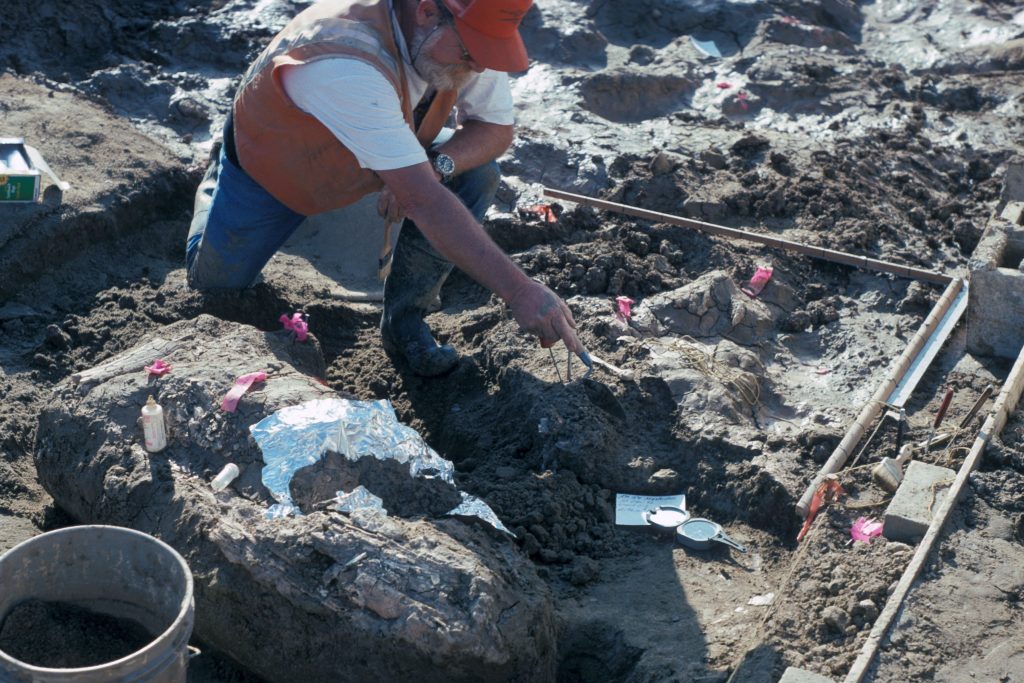
On November 16, 1992, paleontologist Richard Cerruti made a startling discovery: in the sandy soil unearthed by a Caterpillar backhoe at a construction site in San Diego, he spied bits of mastodon bones and teeth. Subsequent digs turned up heavy stones, which could have been used by early humans as anvils and hammers to get at marrow inside the bones, say paleoanthropologists Kathe and Steve Holen.
But the most unusual aspect of the fossil find was the age of the specimens. They appear to be 130,000 years old—more than 100,000 years older than the date most scientists agree humans first set foot in North America. These early human arrivals may have been Homo erectus, Neanderthals, or Denisovans; we can’t know, because no hominid bones were recovered at the site. But they likely weren’t Homo sapiens. Our species had yet to leave Africa. The details are in the journal Nature.
[Fossil jaw turns back the clock on human evolution.]
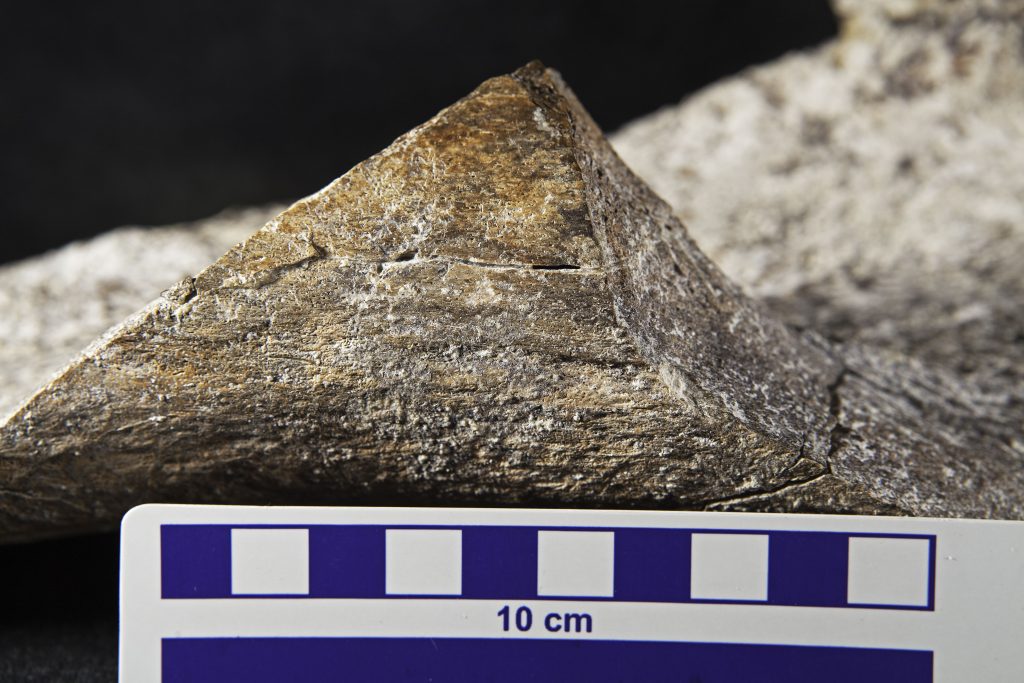
Warren Sharp is an expert on the type of uranium dating used in the study, and is based at the Berkeley Geochronology Center. Sharp, who was not involved in the research, told Science Friday: “We have to believe the date. The date is not the question in this study.” Instead, the criticism many scientists have is that, in the absence of actual hominid remains, these mastodon bones and stones don’t unequivocally prove that humans were present at the site. Perhaps another large animal stepped on the mastodon bones, crushing them. Or maybe geologic processes damaged the stones and bones, then deposited them at the site.
“This is quite an extraordinary claim, for which I would have liked to see extraordinary evidence,” Smithsonian paleoanthropologist Briana Pobiner wrote in an email. “While I don’t think we should rewrite the textbooks yet, I think the team have done their homework in crafting a strong argument for human involvement in the modification of the mastodon bones and stones at the Cerutti Mastodon site.”
[A 14,000 year-old discovery emerges from oral history.]
In other words, this is when the real science begins. “There is no doubt that the evidence that they have presented here will be intensively scrutinized, as it should be,” wrote UC Berkeley paleoanthropologist Tim White in an email. And when the dust settles from those scientific skirmishes, perhaps an answer about our deep human history will emerge.
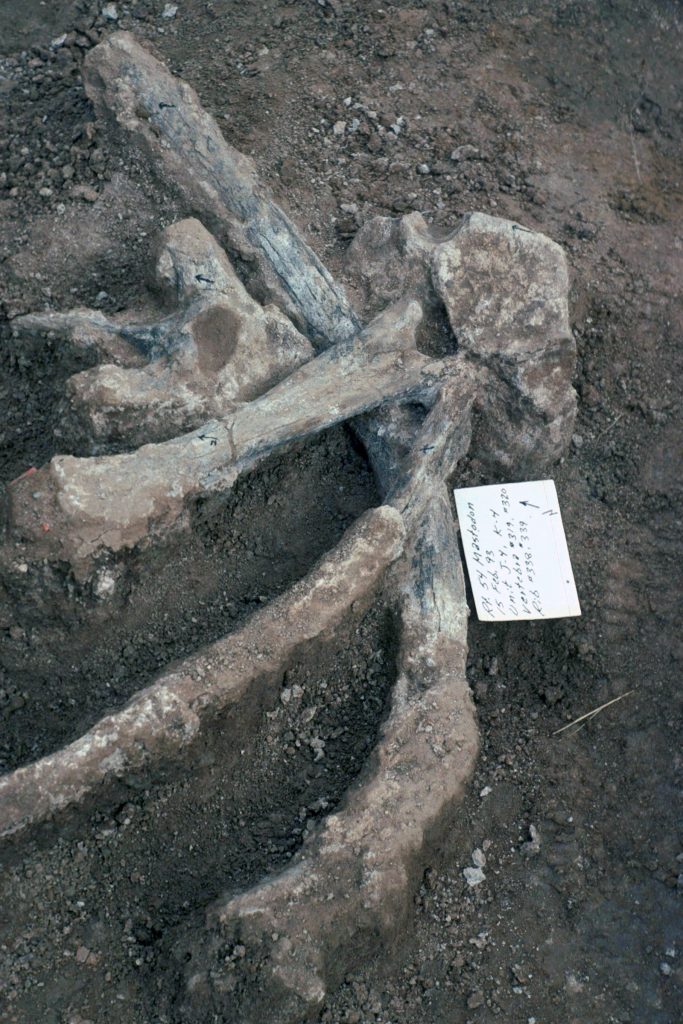
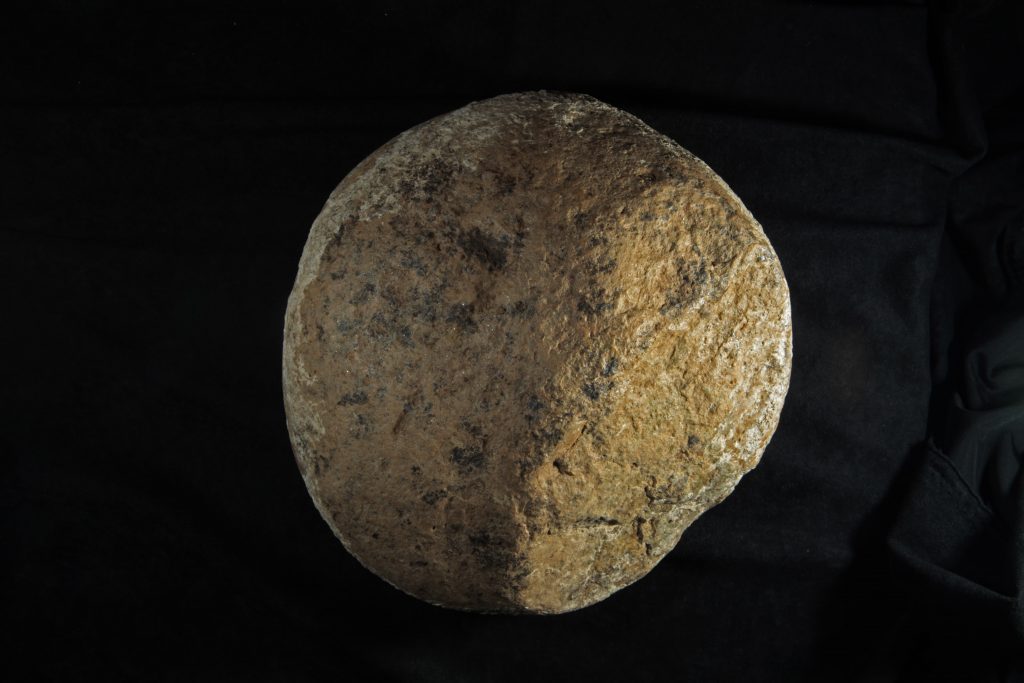
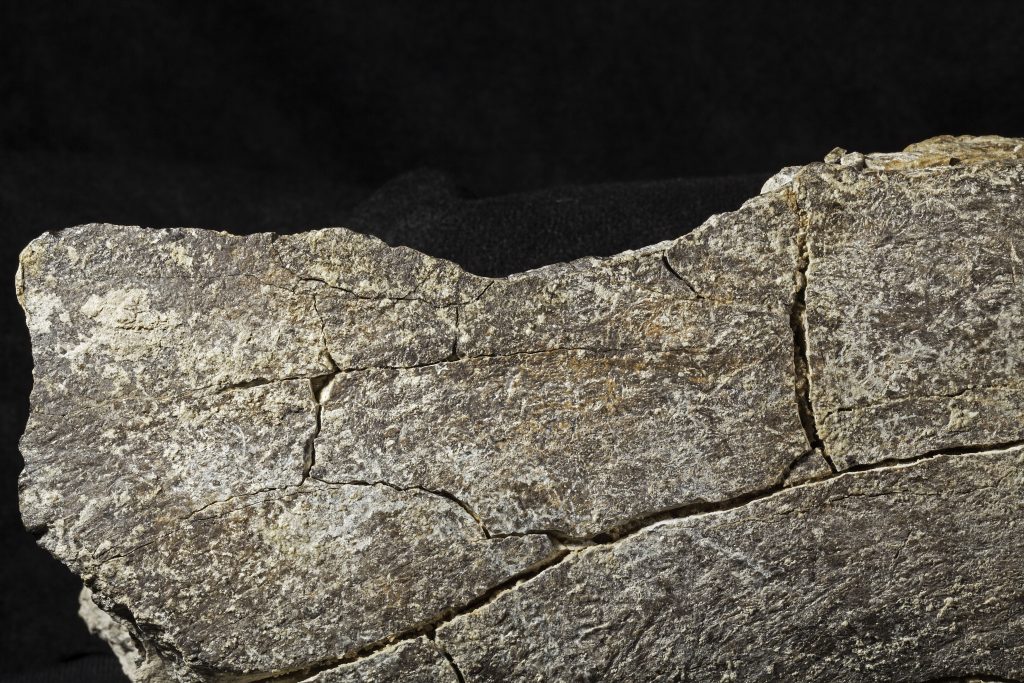
Kathe Holen is Director of the Center for American Paleolithic Research in Hot Springs, South Dakota.
Steve Holen is Director of Research at the Center for American Paleolithic Research in Hot Springs, South Dakota.
Briana Pobiner is a paleoanthropologist at Smithsonian’s National Museum of Natural History in Washington, D.C.
IRA FLATOW: This is Science Friday. I’m Ira Flatow. It’s November, 1992. A paleontologist monitoring a freeway construction site in San Diego makes a startling and very lucky discovery. As he watches a Caterpillar backhoe dig through the sandy soil, he spots bits of mastodon bones and teeth. It is an exciting and, perhaps, historic day on the job. Subsequent digs turn up heavy stones, which paleontologist now say could have been used as an anvils and hammers to get at marrow in the bones or make bone tools.
But nothing I’ve said so far is that unusual. Troves of old bones and tools are found all over the world. But this is the thing, after over two decades of work, scientists finally got an age for those old bones. And wait for it– 130,000-years-old, in North America, a place where we thought humans didn’t set foot until 15,000 years ago.
130,000? So this new find? It’s 10 times older than that. Of course, as Carl Sagan used to like to say, extraordinary claims require extraordinary evidence. Joining me now to talk about that evidence is Kathy Holen. She is director of the Center for American Paleolithic Research in Hot Springs, South Dakota. She’s one of the authors of a new study about the fossil finds, out this week in the journal, Nature.
Welcome to Science Friday, Dr. Holen.
KATHY HOLEN: Oh, it’s Kathy Holen. Thank you very much.
IRA FLATOW: It’s nice to have you. Also, Steve Holen is with us. He’s director of research at the Center for American Paleolithic Research and a co-author on the Nature study. Welcome to you, Steve.
STEVE HOLEN: Oh, thank you. Nice to be here.
IRA FLATOW: I imagine you two are connected somehow– husband and wife.
KATHY HOLEN: We are. Yes, we are– research partners and husband and wife.
IRA FLATOW: Yeah, let’s talk about the research, Kathy. Let’s start with what you have here. Give us a quick rundown of what exactly was found at the site.
KATHY HOLEN: Well, as you mentioned, we found mastodon bones. And from our experience, these were broken in patterns that usually are associated with human modification. They were broken while they were still fresh. And the fragments were found to be clustered in two distinct areas around rocks. And we also noticed that there was a differential breakage pattern.
What I mean by that is these heavy limb bones that are useful for making tools were smashed and broken up. But the lighter bones, like ribs and vertebra, were more complete. And so that right there gave us a clue that something unusual was going on here. The other thing was that we found characteristic marks on the bones surfaces, notches and scars, where flakes of bone had been removed. And this is characteristic of bone that is broken by what we call percussion, that is, with hammers stones.
And we also found cone flakes. These occur, characteristically, around the point of an impact, much like when you see a BB strike a window. Those circular patterns break off in flakes. And we could find these. So again, we were seeing evidence that something had broken these bones by hitting them very hard.
Then, we found stones that were located right within the concentrations of the mastodon bone fragments and flakes. And the stones and bone fragments could be refit back together, so it showed that whatever happened happened in the same location. And then we found marks on the rocks that were characteristic of them being used as pounding tools. And there was pounding evidence on both the rocks and also on the mastodon bones.
IRA FLATOW: Hm.
KATHY HOLEN: And then we saw signs of human behavior at the site. For example, the location of one of the impacts suggests that there was cooperation between at least two people to steady this bone on an anvil and then break it.
In addition to that, we ruled out natural causes for this to have happened– that we found no evidence that carnivores had modified the bones or that there had been a trampling event that had broken the bones. And there’s no evidence of heavy flooding that would have caused the rocks to break the bones. Because the heavy flooding would have washed away these smaller fragments that were right with the stones.
IRA FLATOW: Hmm. Steve, you and Kathy have actually done modern-day re-creations of what happens when you hit fresh bones with rocks. Tell us about that.
STEVE HOLEN: Well, we’ve actually done two experiments breaking elephant limb bones. And the first one was in Tanzania, Africa in 2006. We were allowed to get one femur out of a dead elephant. And we used a large rock to break this elephant femur on an anvil. And we reproduced the same kind of fracture patterns that we see on the Cerutti site mastodon limb bones.
A second experiment– after we found out about the Cerutti site mastodon, we began this research with the other team in 2008. And in 2009, we got a zoo elephant that had died and broke some of the bones. And in this case, we used a 32 and 1/2 pound rock as a hammer and set the bone up on an anvil. And another person had to hold the bone on an anvil. So this is obviously a two-person event when–
IRA FLATOW: Wow.
STEVE HOLEN: –you do these things.
And I hit the bone four times with this hammer. And I’m not a real big guy. And I couldn’t break it. I had to get a young, strong, graduate student on there, who was much more of a man than I am. And he hit it about four times before he first broke the bone. And again, we made the same kinds of impact notches and cone flakes that we see on the Cerutti site mastodon bone.
We then sent the tips of some of these hammers to Australia to our co-author Richard Fullagar, who’s an expert on use-wear analysis on pounding tools, on rock hammers. And we didn’t tell him how old the site was. We sent some of the rocks from the Cerutti mastodon site itself and then some of the rocks from our experiments.
And he looked at the Cerutti site stones and sent them back and said, yes, these are stone tools, definitely used to pound on bone. And they’ve also hit other rock. And then we told him how old the site was. And he was quite astounded.
IRA FLATOW: We talked with an independent expert on the type of uranium dating used in this study, Warren Sharp, of the Berkeley Geochronology Center. Here’s what he had to say about the dates determined in the work.
WARREN SHARP: Basically, we have to believe the date. The date is not the question in this study. There have been lots of people that have claimed that they had some kind of archeological evidence for people earlier than 15,000 years ago or so. But if this really passes muster, then I think all of those sites and all of those claims are going to be looked at with new eyes. And people are going to not just dismiss them out-of-hand.
IRA FLATOW: Amazing. We have actual pictures of the specimens and a link to this study up on our website, sciencefriday.com/mastodon– sciencefriday.com/mastodon. Of course, even if we believe the dates, there’s still the other question, can we say unequivocally that this was done by humans or human relatives without finding their remains? We didn’t find any remains at this site.
I’d like to bring on someone who wasn’t involved in the study, but who has experience analyzing bones leftover from ancient dinners– a lot of them. Briana Pobiner is a paleoanthropologist at the Smithsonian’s National Museum of Natural History in Washington.
Welcome to Science Friday.
BRIANA POBINER: Thanks. Happy to be here.
IRA FLATOW: So your first thoughts when you saw the results–
BRIANA POBINER: So my first thoughts were not so much what’s there. But what’s not there. And I think what I’m looking for, what I would be looking for, what I don’t see, are two things that are real smoking-guns of human involvement. The first is cut marks on the animal bones. So usually, if there’s butchery for meat or even if there’s scraping off of tissue, like periosteum or connective tissue, to be able to get to the bones to break them open, you would expect to see cut marks by sharp stone tools.
And the other thing is those sharp stone tools themselves. So most butchery sites that we see in other areas of the world that are this age or older that have evidence of butchery by humans have both those sharp stone knives and the cut marks. And so that, to me, just gives me pause and makes me think about it a little bit more and just gives me question.
IRA FLATOW: Yeah. Well, could it have been an animal? An animal done it with teeth marks? Sabertooth tiger or something like that?
BRIANA POBINER: Well, so I’ve seen a lot of what happens when hyenas and other predators chew on bones. And I would say, no. So I think the team has done a good job of ruling out that. I don’t think there’s carnivore involvement here. They tend to chew on the ends of bones. And they can’t really break open, right at the mid-shaft, the bones of big animals.
But there is evidence– and particularly, Gary Haynes, who recently retired from the University of Nevada-Reno, has done a lot of studies looking at what happens when elephants trample on bones. And in one study, he noticed, from natural elephant bone sites in southern Africa, that up to 62% of elephant limb bones are spirally fractured. And so I think we can’t say necessarily, because the bones have this green or fresh or spiral fracture, that it definitely means human involvement.
IRA FLATOW: Yeah, Kathy, let’s say for a second that these this fine 130,000-year-old bones is correct, as you seem to be saying. Who did the butchering? Were they homosapiens? Could they be one of our human cousins? Neanderthal? Something like that? We only thought that people were in the Americas 15,000 years ago.
KATHY HOLEN: Well, I think first of all, we have to clarify that we have never claimed that the CM mastodon was butchered. In fact, we believe that the bones broken were, essentially, a quarry site. That is, people were coming and utilizing the bone, harvesting the bone to be used. And so the absence of cut marks and manufactured tools is because it was not being used for that purpose. The animal was not killed and butchered.
But we do have some candidates that might be the agents of this breakage. And we’re just speculating here. Because in fact, the real truth is we do not know. Candidates could have been, though, Neanderthals or the Denisovans and even archaic humans. But this site will never demonstrate that. We don’t have enough evidence from the CM site, which is why we need to go out and find more sites.
IRA FLATOW: Hm. You think there are more out there?
KATHY HOLEN: Yes
IRA FLATOW: Well, do you have evidence for that? That you’re ready to go? Or you’ve found something you don’t want to tell us about yet?
KATHY HOLEN: Ha!
STEVE HOLEN: Well–
KATHY HOLEN: I’ll let Steve answer that. We have some preliminary evidence from another site. But it’s very preliminary. And we can’t talk about it at this point.
IRA FLATOW: Oh, no one’s listening. Come on. You can [INAUDIBLE].
[LAUGHTER]
STEVE HOLEN: No, we have to keep this quiet, just like the press embargo on the Nature letter.
IRA FLATOW: Yeah.
KATHY HOLEN: Plus, I know somebody is listening, because I told my family.
IRA FLATOW: Well, is it near the same site? Where were these bones found? I don’t think we quite mentioned where they were found.
STEVE HOLEN: The mastodon bones?
IRA FLATOW: Yeah, the mastodon–
STEVE HOLEN: They were found along a highway project in the city of San Diego.
IRA FLATOW: Wow, that’s amazing. Have we done thorough excavations of this era of time in other places in the Americas? Is it possible that outside of San Diego there are other fossils this old just hiding out there, waiting to be discovered?
KATHY HOLEN: Yeah, I think that’s one of the issues about sites of this age. Typically, archeologists don’t look in settings of this age. And paleontologists who do look in sites of this age are not really looking for evidence of human involvement. And so what we have is a site that sort of falls in between the two disciplines.
And what this project did for me was show how valuable it is to have interdisciplinary people working together on one site, where we’re all bringing our experience and knowledge and our ability to see things in different ways and collaborating until we find an answer. Believe me, all of us on the team were skeptical. We wanted to get evidence and gather evidence to support what we were seeing, what we couldn’t believe was there, the evidence that appeared to us to show human involvement at this site.
IRA FLATOW: I’m Ira Flatow. This is Science Friday from PRI, Public Radio International. Talking about these 130,000-year-old fossils, Dr. Pobiner, you work at the Smithsonian. Could there be other specimens sitting in your museum? Old fossils anywhere else too we might want to re-examine in light–
BRIANA POBINER: There could–
IRA FLATOW: –of this study?
BRIANA POBINER: Oh, definitely. I actually think that looking in museum collections, which tend to be troves of treasure waiting to be rediscovered, would be a great idea. There’s a site from Maryland, actually, called the Inglewood Site, where there is a mammoth that was 24,000-years-old. And there was a reexamination of those fossils recently. And it looks like those bones from that mammoth were green or spiral fractured, probably because of the heavy earth moving equipment that was used in part of the excavation of the site.
So I think the Inglewood mammoth and other places and looking in other museum collections is definitely a way to go. I also think looking, potentially, for protein or blood residues on the stone tools to see if there’s anything left from if the mammoth was fresh when– if it was broken open. As well as, there was a paper that came out yesterday where a research team actually found DNA from Neanderthals and Denisovans in the dirt in a cave.
So let’s try that. I think if we’re going to look for evidence of human involvement, let’s throw everything we can at it. It’s a compelling idea. But I think we need to find more evidence.
IRA FLATOW: Well, what kind of evidence? Do you actually have to find the DNA evidence? I’m looking for the rewrite the textbook level convincing evidence here.
BRIANA POBINER: Well, I think, again, stone tools– and even if it’s not a site where were mammoths were being butchered, we might still expect to potentially find other marks from stone implements in order to do that processing, like percussion marks, as opposed to just percussion fracture. But I think the tools of humans would be– that would be a smoking gun to just add to the evidence.
IRA FLATOW: We think about humans coming over that land-bridge Steve Holen. Did humans or relatives maybe have sophisticated boat-making skills 130,000 years ago?
STEVE HOLEN: Well, we think there are two possible options for humans to get into North America at that time. The land-bridge was open until about 130,000 years ago, when rising sea levels, because of melting glaciers, closed the Bering land-bridge. So if people came in– another option is that people had good watercraft by this time.
There’s evidence on the island of Crete, based on hand-axes found in 130,000-year-old geological deposits, that humans arrived there. And there’s never been a land-bridge there, so they had to have some kind of watercraft to get there. Also in Indonesia, on the island of Sulawesi, sometime between 118,000 and 190,000 years ago, humans arrived at that island. And they had to get there by some kind of watercraft.
So we know people had that technology at that time. And when the climate started warming, about 135,000 years ago, they surely could have followed the coast of Asia north and then followed the west coast of North America south and arrived in beautiful California.
IRA FLATOW: Yeah, we saw some evidence a couple of weeks ago about parts of the Pacific Northwest, which were above sea level during that time and only an island– people would have to have gotten there. Great topic for further discussion.
Let me thank my guests. So Briana Pobiner is a paleoanthropologist at the Smithsonian. Kathy Holen, Director of the Center for American Paleolithic Research in Hot Springs, South Dakota. And Steve Holen, Director of Research at the Center for the American Paleolithic Research. I thank you all for joining us today.
KATHY HOLEN: Thank you.
STEVE HOLEN: Thank you.
IRA FLATOW: You’re welcome.
BRIANA POBINER: Thank you.
IRA FLATOW: You’re welcome. And just a reminder, we have pictures of the specimens and a link to the study. It’s up on our web site at sciencefriday.com/mastodon– sciencefriday.com/mastodon. We’re going to take a break. When we come back, a new kind of smart television, a new series on National Geographic about Albert Einstein. Stay with us. Walter Isaacson will join us after this break. We’ll be right back.
Copyright © 2017 Science Friday Initiative. All rights reserved. Science Friday transcripts are produced on a tight deadline by 3Play Media. Fidelity to the original aired/published audio or video file might vary, and text might be updated or amended in the future. For the authoritative record of ScienceFriday’s programming, please visit the original aired/published recording. For terms of use and more information, visit our policies pages at http://www.sciencefriday.com/about/policies/
Christopher Intagliata was Science Friday’s senior producer. He once served as a prop in an optical illusion and speaks passable Ira Flatowese.